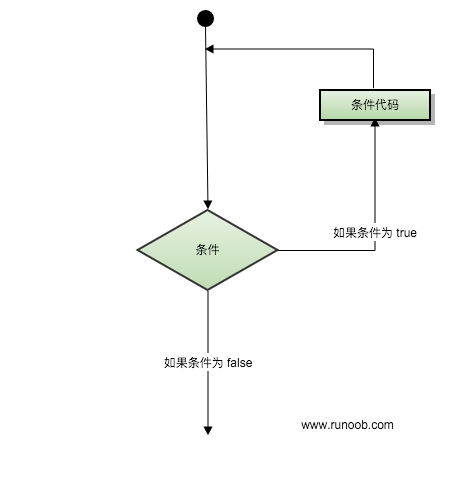# Python循環語句
本章節將向大家介紹Python的循環語句,程序在一般情況下是按順序執行的。
編程語言提供了各種控制結構,允許更復雜的執行路徑。
循環語句允許我們執行一個語句或語句組多次,下面是在大多數編程語言中的循環語句的一般形式:

Python 提供了 for 循環和 while 循環(在 Python 中沒有 do..while 循環):


